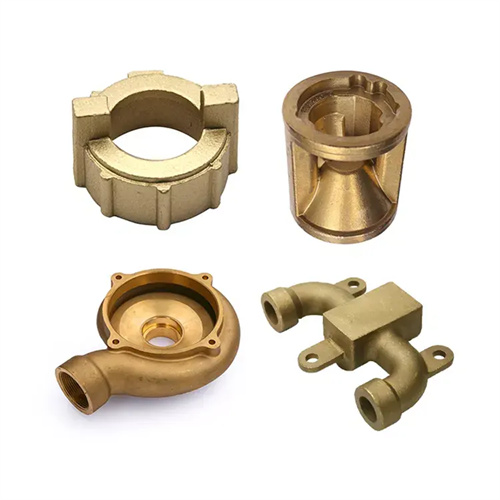Design of the Inclined Slider in the Die-casting Die
The design of a die-casting mold’s inclined slider is a crucial technology for achieving oblique molding and demolding from the outside or inside of a casting. The slider’s oblique motion allows for the extraction and resetting of the core, making it suitable for castings with oblique holes, grooves, or tapered surfaces. The design of the inclined slider must balance molding accuracy, motion smoothness, and structural strength. The key lies in determining the inclination parameters, fit accuracy, and guidance method, while also coordinating the movement relationship with other mold mechanisms. Compared to conventional side sliders, the movement direction of the inclined slider forms a certain angle with the mold opening direction. Therefore, special attention must be paid to force transmission efficiency and anti-seizing measures during design to ensure reliable operation in high-pressure die-casting environments.

The design of the inclined slider’s inclination parameters is crucial, including the angle of the guide pin, the slider’s inclination, and the core-pulling angle. The guide pin angle is typically 15°-25°. A smaller angle increases the slider’s size, while a larger angle reduces force transmission efficiency and can easily cause jamming. The slider’s inclination must be consistent with the guide pin angle, with an error of ≤0.5°, to ensure synchronized motion. The core-pulling angle is determined based on the casting’s inclination characteristics and is related to the slider’s inclination by the formula α = β ± γ (α is the core-pulling angle, β is the slider’s inclination, and γ is the casting’s inclination). For example, if the casting’s inclination is 5° and the slider’s inclination is 20°, the core-pulling angle should be 15° or 25°. The slider’s stroke is calculated as S = H/sinα + 5-10mm (H is the core-pulling height, and 5-10mm is a safety margin) to ensure the core is completely clear of the casting.

The slider body’s structural design must meet strength and molding requirements. The slider body adopts either a monolithic or modular construction. The monolithic construction is suitable for simple shapes, while the modular construction consists of a slider base, core, and wear-resistant plate, facilitating machining and replacement. The slider body’s length-to-width ratio is 1.2-1.5, with the height determined by the core-pulling force and generally no less than 0.8 times the width. The slider base material is 45 steel or QT500-7, with a tempered hardness of 28-32 HRC. The core material is Cr12MoV, quenched to 55-60 HRC, with an H7/m6 fit to the slider body. The locating pin positioning accuracy is 0.01-0.02mm. The slider’s working surface has a surface roughness of Ra0.8μm or less, and the molded surface is polished to Ra0.4μm to minimize surface scratches on the casting.

The guide and fit design directly impact the slider’s motion accuracy. The slider and template utilize a clearance fit (H8/f7) with a clearance of 0.03-0.05mm. The guide length should be no less than 1.5 times the slider width. Guiding options include T-slot, dovetail, and rail. T-slots are simple to machine and suitable for medium loads; dovetail grooves offer high precision and are suitable for high-precision applications; and rail guides offer high load capacity and are suitable for large sliders. The guide surface is inlaid with a wear-resistant alloy plate (such as ZCuAl10Fe3) with a thickness of 3-5mm. It is secured with countersunk screws flush with the slider surface to reduce friction.

Core pulling force and strength verification are crucial design steps. The core pulling force is calculated as F pull = K × F hold, where K is the safety factor (1.5-2.0), F hold is the casting holding force, and F hold = σ shrink × A (σ shrink is the shrinkage stress, 80-120 MPa for aluminum alloys, and A is the contact area). For example, for an aluminum alloy casting with a contact area of 5000 mm², F hold = 100 × 5000 = 500,000 N, and F pull = 1.5 × 500,000 = 750,000 N. Slider strength verification requires calculating the bending stress, σ bend = 3FL/(2bh²) ≤ [σ] (where F is the core pulling force, L is the cantilever length, b is the slider width, h is the slider height, and [σ] is the material allowable stress) to ensure that strength meets requirements.

The coordinated design of the inclined slider and other mechanisms must avoid motion interference. Core pulling must precede the ejection mechanism. After core pulling, the distance between the slider and the casting must be ≥5mm to ensure no interference during ejection. For molds with multiple inclined sliders, a synchronized core pulling mechanism must be designed. Gear racks or linkages must ensure consistent movement of each slider, with a synchronization error of ≤0.1mm. During mold closing, the inclined slider must close into position before the cavity. This can be achieved by installing a pre-reset device or adjusting the length of the inclined guide pins to avoid collision with the fixed mold.
